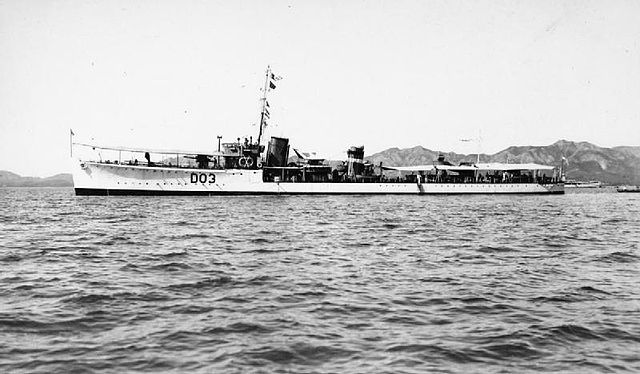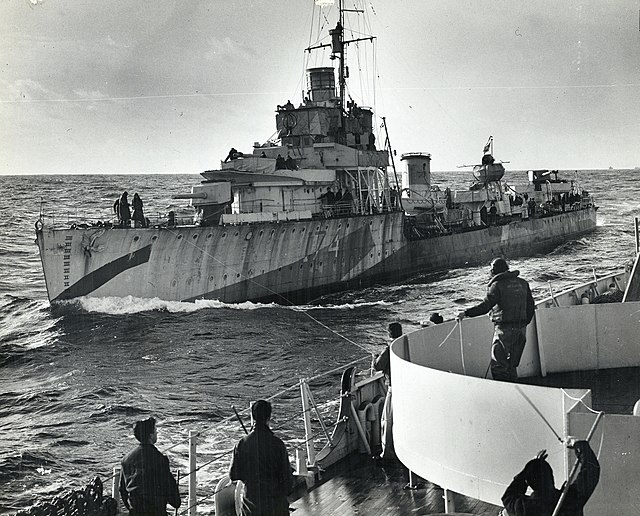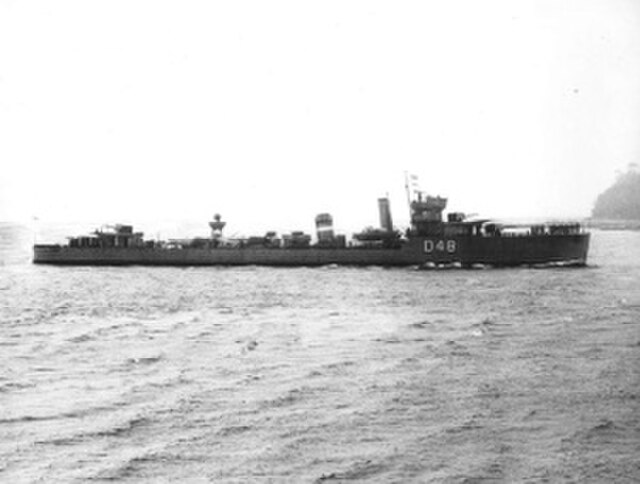The S class was a class of 67 destroyers ordered for the Royal Navy in 1917 under the 11th and 12th Emergency War Programmes. They saw active service in the last months of the First World War and in the Russian and Irish Civil Wars during the early 1920s. Most were relegated to the reserve by the mid-1920s and subsequently scrapped under the terms of the London Naval Treaty. Eleven survivors saw much action during the Second World War.
Tenedos underway at high speed, 1921
Shikari, 1929, showing her configuration as a control ship for radio-controlled targets
HMS Sepoy serving with the 8th Destroyer Flotilla on the China Station, c. 1930
Champlain (ex-Torbay), c.1932, showing the raised gun platform forward, characteristic of the Thornycroft S class
The V and W class was an amalgam of six similar classes of destroyer built for the Royal Navy under the 9th, 10th, 13th and 14th of fourteen War Emergency Programmes during the First World War and generally treated as one class. For their time they were among the most powerful and advanced ships of their type in the world, and set the trend for future British designs.
HMS Veteran, an Admiralty modified W ship, a model at the Glasgow Museum of Transport
HMAS Waterhen (D22)
HMS Wanderer (D74/I74) in 1942
HMS Vidette (Admiralty V class), showing the typical inter-war layout of a V and W-class destroyer. She is wearing the 1939-pattern funnel bands of the 16th Destroyer Flotilla based at Portsmouth; one red over one white.








